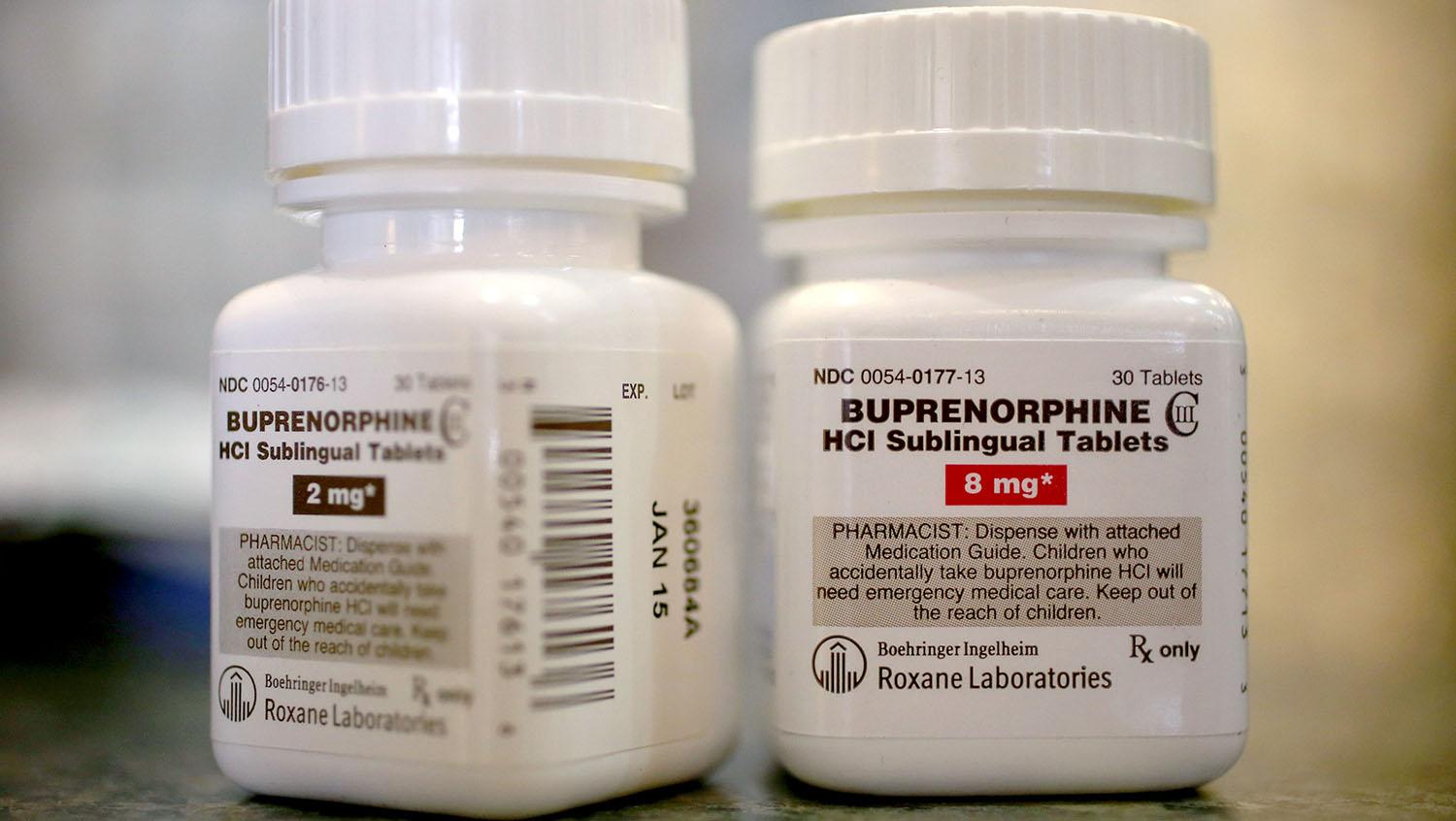Breaking Down the Changes to Prescribing Buprenorphine for Opioid Use Disorder
January 20, 2021
By Ilima Loomis

Getty Images
Miriam Komaromy, MD, medical director for the Grayken Center for Addiction at BMC, reacts to the news of increased access to a key medication for opioid use disorder.
Methadone and buprenorphine are the two most effective FDA-approved medications for opioid use disorder (OUD) treatment. But unlike methadone, which requires daily medication administration at specialized clinics, buprenorphine is the only controlled substance that is approved for office-based prescribing for treatment of a substance use disorder. This relative ease of access had been limited, however, by a number of restrictions on potential prescribers.
The U.S. federal government required physicians to first undergo a sanctioned course of education and then apply for special “X-waiver” before being allowed to prescribe buprenorphine. But policy advocates and prescribers have argued that there’s no reason why there should be this restriction put on buprenorphine when more dangerous controlled substances — including fentanyl and other full agonist opioids — have no such restrictions.
Now, the U.S. Department of Health and Human Services has released updated regulations under its practice guidelines that eliminate this waiver requirement. President Joe Biden references “removing undue restrictions on prescribing medications for substance use disorder” in his plan for addressing the opioid crisis, though the page doesn’t specifically state if and when eliminating the X-waiver requirement would go into effect. While expanding access to this medication overall, the change has implications for health equity. Studies have shown that buprenorphine is more likely to be marketed to white patients and used in treating white patients, while Black patients are more likely to be funneled to methadone clinics with higher barriers of access to treatment.
Miriam Komaromy, MD, medical director of the Grayken Center for Addiction at Boston Medical Director, shared her thoughts on the change and what it means for clinicians and patients.
HealthCity: What is the X-waiver and how did it affect clinicians’ ability to prescribe buprenorphine for opioid use disorder?
Miriam Komaromy, MD: The Drug Enforcement Agency X-waiver allows clinicians to bypass laws that make it illegal to prescribe controlled substances for the treatment of substance use disorders. To get an X-waiver, you had to go through specific training. But buprenorphine is different from standard opioids in a number of ways. It’s only a partial activator of the mu-opioid receptors in the brain, whereas the other opioids are full activators — meaning, other opioids are much more dangerous than buprenorphine. It’s almost impossible to kill somebody with buprenorphine alone because it doesn’t cause their breathing to stop in the same way that large doses of heroin or fentanyl or oxycodone would cause. So, it’s actually a safer opioid than the other opioids that we’ve been allowed to prescribe without regulatory restrictions.
But, for example, in my office, I could write a prescription for fentanyl anytime I want without getting any additional education, but I couldn’t prescribe buprenorphine without taking an eight-hour course and getting the waiver. The same is true with other medications that are much more dangerous than buprenorphine, such as chemotherapy agents or insulin — I can prescribe them freely at my own discretion.
This has been a major barrier to prescribers engaging with treatment of opioid use disorder in an office-based setting.
HC: What does the elimination of the X-waiver for buprenorphine mean for prescribers?
MK: It’s a big deal because it opens up the opportunity for other physicians to prescribe who haven’t wanted to go through the eight-hour training course. Another significant issue has been that the DEA has performed more intensive monitoring of prescribers of buprenorphine than of other medications. That’s made physicians feel like they’re opening themselves up to additional scrutiny. So, taking away this special waiver requirement, I think, will reassure physicians that the DEA is not going to be breathing down their back.
HC: How will this improve opioid addiction treatment for patients of color and others who have historically had less access to treatment?
MK: In general, communities of color have less access to medical treatment typically because of where medical treatment is located and because of unequal access to employment, insurance, and many other barriers caused by structural racism. Because more primary care sites will have providers who are able to prescribe buprenorphine under these revised regulations, I think that could have a beneficial effect on communities of color. But this change will have impact across the board.
Buprenorphine, theoretically, should now be available in any office-based primary care practice, so this should broaden access for everyone — but it remains to be seen whether physicians will take advantage of that opportunity. Clearly the X-waiver is a barrier, but it’s not the only barrier to people prescribing. Frankly, stigma toward people who use drugs is perhaps an even larger barrier.
HC: Are there other limitations to this change or other existing barriers to pharmacotherapy that still concern you?
MK: Many legal barriers remain in place. For one thing, this change is limited to physicians. Nurse practitioners, physician assistants, nurse midwives, and a number of other non-physician prescribers still have to get the X-waiver.
For another, the federal government left in place the 30-patient cap. Any physician can treat up to 30 simultaneous patients with buprenorphine, but they can’t treat more than that without going through the X-waiver training. A year after you get your X-waiver, you can petition to expand the cap to 100 and then eventually to 275 patients. There’s no real rationale for restricting the number of patients. It’s discriminatory, frankly, and just born of stigma toward people who have substance use disorder.
HC: Is there any downside to removing the X-waiver requirement for physicians who want to treat opioid use disorder?
MK: Some addiction and public health experts have raised a concern that, when we take away the X-waiver training, we are removing one of our only opportunities to provide practicing physicians with education about substance use disorder and how to treat it. Medical education has not done a very good job with this particular topic.
However, it does not make sense to me to link the education requirement to use of this one medication to treat OUD. Instead, if state medical boards want to require licensed providers to learn more about treatment of substance use disorders, they should link this requirement to prescribers obtaining a license to prescribe any controlled substance.
There are also many excellent sources of education about treatment of substance use disorder available from organizations like the American Society of Addiction Medicine (ASAM), the Practitioner Clinical Support Service (PCSS), or the American Association of Addiction Psychiatry (AAAP).
HC: What do you hope will be the long-term impact of this change?
MK: Buprenorphine and methadone are the two most powerful tools that we have to treat opioid use disorder. Both of them are associated with decreased mortality, decreased overdose, decreased rates of HIV infection and hepatitis C infection, and decreased injection drug use as well as increased rates of employment, increased engagement in treatment, and a whole lot of other really important outcomes. So, it’s incredibly important that medications for opioid use disorder be readily accessible to patients who have opioid use disorder if we’re going to avoid having people die from this really deadly disorder. Now, this one thing that’s been a fairly significant barrier is being removed.
I would encourage frontline physicians to now start to treat OUD more like the way that they treat any other chronic disease that they use the medications that are FDA-approved to treat. And using buprenorphine to treat OUD is no different than using lisinopril to treat hypertension. They’re both standard of practice, and these are both chronic conditions that we should consider within our scope of practice to treat. I would hope that many more physicians would start to prescribe these medications for the treatment of opioid use disorder.


